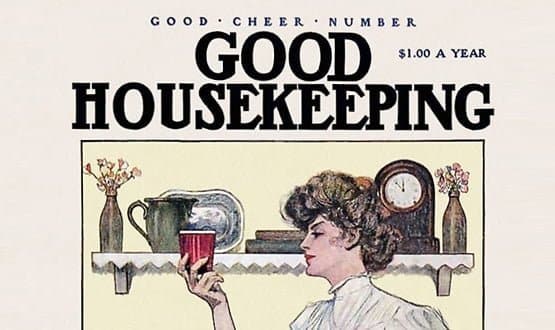Enter the CCG: on good housekeeping
- 16 June 2015

An important function of any clinical informatics lead is to keep scanning the horizon for impending opportunities and problems.
One such threat – very much disguised – emanates from ‘Principle 4’ of the Data Protection Act: the requirement to keep patient data up to date.
But that’s simple! Just keep adding to the medical notes whenever the patient is seen in the surgery. That will do it… won’t it?
No it won’t. Indeed, the more I think about this subject the more onerous – indeed, overwhelming —it becomes.
The size of the problem
Think about the primary care record. Up to date, you say? How many of its repeat prescriptions are actually active?
When medication is discontinued or altered on a trial basis, how often does the clinician remember to return to the record a few weeks later to confirm or revoke the changes?
How often do GPs go to the medical record, only to find both the new and the old medication staring them in the face? That prescription for lisinopril 5 mg is still there, even though the patient has been on 10 mg for the last 18 months (will a locum think she is taking 15 mg a day)?
Or maybe the new, 10mg dose last month was issued as an acute prescription – has anyone remembered to turn it into a repeat (some systems display acutes and repeats in different places)?
In addition (sometimes dependent on system settings) an acute prescription may only be displayed on the list of current medication for a limited time following the date of issue – sometimes only 28 days.
Yet how many six-month duration medications are prescribed acutely – the contraceptive pill, for example?
Long-term drugs prescribed acutely may well not appear on the list of current medication for 5/6ths of the time – and therefore may not be displayed on the Summary Care Record either, presenting a medicolegal risk.
Furthermore, entries which are automatically collated and then passed on won’t be accurate or complete if regular housekeeping hasn’t taken place – for example, the list of current medication in referral letters and reports.
Diagnostic accuracy
Then there is the accuracy of listed diagnoses. Primary care records contain a list of problem/summary headings, often with current/dormant or major/minor attributes against each entry.
How often are these flags checked for veracity? For example, when that episode of abdominal pain, initially labelled as ‘minor’, develops into a perforated appendix?
Or when ‘appendicitis’ is still flagged as a ‘current’ problem, even though the appendicectomy was six years ago (or is that heading truly ‘current’ because of residual pain…)?
What about younger patients? You may have set up consent for the parent or guardian to view the child’s record on-line. But have you set up a mechanism to ensure that this consent isn’t perpetuated inappropriately, and that when the child reaches maturity you review the arrangement?
How will you monitor this throughout the practice? In a few years’ time, will GPs regularly come across patients in their late teens and early twenties, perhaps even married, whose records can still be viewed on-line by their parents?
Coding issues
Then there’s coding. It’s often difficult for a GP to be certain of the diagnosis after the first consultation: we see illness in its earliest stages, where symptoms and signs are anything but well-defined.
In such cases, there is usually no point in entering a definitive, coded diagnosis because it’s quite possible that later investigation and/or the passage of time will prove the diagnosis completely wrong.
Because of this, as a GP I seldom enter diagnostic codes. The initial history and examination are usually in free text: if I do use codes early on it will mostly be a symptom code – ‘epigastric pain’ – rather than a diagnosis code – ‘gastric ulcer’.
Definitive diagnostic codes usually get added some time later – either when the passage of time reveals to the GP the true underlying disease; or after a hospital visit at which specialised investigations such as oesophagoscopy can be carried out.
In the latter case, it will be the practice nurse who adds the diagnosis codes from the discharge letter. And here’s the killer question: how often do clinicians go through the record, subordinating the early symptom codes under the later, more definitive entries? Not as often as we should, I suspect.
These aren’t the only coding issues. Increasingly we all rely on the computer’s automatic routines to alert us to problems, or to trigger work on patients with long term conditions.
But this relies on the computer being able to identify problems correctly, which in turn depends upon the presence of appropriate, specific Read codes in the patient record, as otherwise these automatic routines won’t be launched.
Similarly, in some situations, entries specifically relating to safeguarding may automatically be visible to other clinicians sharing the record, even in the absence of consent to share information — and that’s as it should be.
But this information won’t be visible if it wasn’t coded correctly to begin with: again, a patient safety issue.
The downside
Poorly-maintained records can be hard to understand and use, especially by a clinician who is new to the patient. They interfere with reporting on the incidence, prevalence and treatment of disease; and can render totally meaningless any statistics comparing practices or individuals.
Many medical records are nothing like as accurate, complete or up to date as we might expect. They may well not display important current information; definitive diagnoses may not be present; levels of significance may not be entered; communication of information may be incomplete; and the patient may still appear to be suffering from illnesses which actually resolved long ago.
And you thought that keeping the record up-to-date occurred automatically?
Good housekeeping
The antidote is good housekeeping of the medical record, which constantly needs tidying, reordering, relabelling…
I find it’s easiest to do this at odd moments in the day, such as in the short period between buzzing for the patient and her entry into my consulting room – although there is a role for a systematic review as well, to tidy up the notes of those who seldom appear in the surgery.
Although record maintenance is a massive task which by definition is never complete, I find it best not to try to do too much at once, to avoid being overwhelmed.
Every little helps, and what you do now doesn’t have to be done next time. Keep repeating the process, too, because keeping the record up to date is a continuous undertaking which simply has to be performed — both for good quality healthcare, and by law.


Dr John Lockley
Dr John Lockley is clinical lead for informatics at Bedfordshire Clinical Commissioning Group and a part-time GP.




